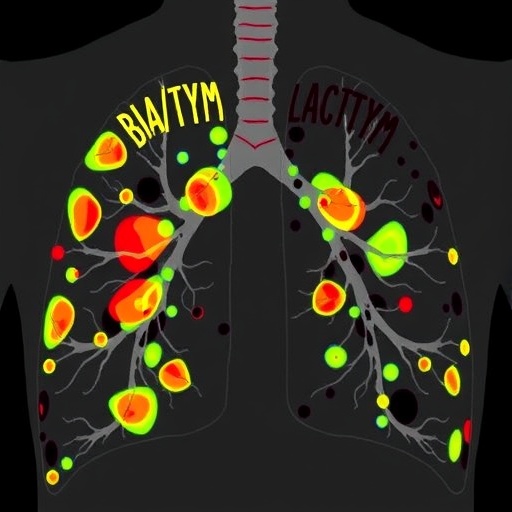In an era dominated by technology and innovation, healthcare practitioners are under increasing pressure to adopt novel strategies aimed at improving patient outcomes. One area ripe for reform is hypertension management, an insidious condition that affects millions globally. Interestingly, a recent study published in the Journal of General Internal Medicine has delved deep into the impact of a theory-informed implementation strategy on clinicians’ attitudes toward out-of-office blood pressure monitoring. This exploration reveals an insightful correlation between strategy-informed practices and the overall efficacy of hypertension screening.
Hypertension, often dubbed the “silent killer,” poses significant health risks, including heart disease and stroke. The conventional approach to managing this condition typically involves in-office blood pressure monitoring. However, this method has its limitations, such as patient anxiety and the phenomenon of “white coat syndrome,” where patients exhibit elevated blood pressure readings in clinical settings compared to normal readings obtained in a relaxed environment. The accompanying study endeavors to explore these limitations by assessing the benefits of out-of-office blood pressure monitoring.
One of the pivotal findings of this research is that clinicians often harbor skepticism towards out-of-office monitoring techniques. This skepticism is rooted in long-standing traditions of in-office monitoring and a lack of familiarity with new approaches. The study implemented a theory-informed strategy to address these concerns and foster a progressive shift in clinical practices. By engaging healthcare practitioners throughout this process, the researchers aimed to dismantle the preconceived notions regarding out-of-office monitoring.
Another significant aspect of the study was the development of an implementation framework that included training and educational interventions. These efforts were designed to equip clinicians with the skills necessary to incorporate out-of-office monitoring into their practice confidently. Participants expressed that having structured training significantly altered their perceptions. As they became more knowledgeable, their confidence in using these alternative methods increased, thus positively influencing their attitude towards hypertension screening.
Importantly, the research also emphasizes the role of patient education. Empowering patients with knowledge about hypertension and the implications of accurate blood pressure monitoring can help mitigate anxiety and enhance compliance with suggested monitoring strategies. Acknowledging that patients are active participants in their healthcare journey is crucial. When patients understand the benefits of out-of-office monitoring, they are more likely to utilize the devices provided by their healthcare practitioners, which ultimately leads to better management of their condition.
The study acknowledges that barriers to implementing out-of-office blood pressure monitoring persist. Factors such as reimbursement policies, time constraints during consultations, and resistance due to established routines can hinder the widespread adoption of this strategy. Nonetheless, addressing these concerns head-on is essential for better patient healthcare delivery. Leaders in the healthcare community should advocate for changes that support alternative monitoring methods, ensuring that clinicians and patients alike can embrace new technologies without fear or hesitation.
Quantifying the impact of this implementation strategy, the researchers utilized both qualitative and quantitative measures. Through interviews and surveys, clinicians were able to articulate their transforming attitudes toward out-of-office blood pressure monitoring. Their responses indicated not only increased acceptance but also enthusiasm at the prospect of providing a more comprehensive screening process for hypertension management. This positive pivot reveals the effective capacity of a theory-informed strategy to disrupt outdated clinical practices and inspire a movement towards more patient-centered care.
Moreover, the data collected showcased a ripple effect of this initiative. As more clinicians became comfortable with out-of-office monitoring, they shared their experiences and successes with peers who had yet to adopt similar practices. This snowball effect contributed to a more significant cultural shift within the healthcare setting, advocating for evidence-based practices that prioritize patient engagement and long-term health results over historically entrenched traditions.
Ultimately, the research suggests that further studies are necessary to consolidate these early findings and demonstrate the long-term benefits of a theory-informed implementation strategy in hypertension screening. This is part of a broader response to the growing demands for health equity and improved technical capabilities in healthcare systems. By progressively adopting out-of-office monitoring, healthcare practitioners will potentially transform hypertension management, reducing disparities and elevating care quality.
In conclusion, the study’s revelations underscore a transformative shift in the attitudes of clinicians towards out-of-office blood pressure monitoring. As technology continues to evolve and patient needs change, the relevance of innovative strategies in healthcare cannot be overstated. It is essential for medical professionals to embrace these new paradigms, ensuring that patient outcomes are optimized. The future of hypertension management depends on a collaborative approach that respects both clinician insights and patient experiences.
With the groundwork laid by this innovative research, the exploration of out-of-office blood pressure monitoring elevates the conversation around hypertension. It challenges healthcare providers to reconsider traditional methods while highlighting the critical need for adaptive implementation strategies shaped by modern clinical research. The journey toward improved hypertension care is a collective endeavor, offering promise for a healthier society.
Subject of Research: Clinician Attitudes Toward Out-of-Office Blood Pressure Monitoring for Hypertension Screening
Article Title: Impact of a Theory-Informed Implementation Strategy on Clinician Attitudes Toward Out-of-Office Blood Pressure Monitoring for Hypertension Screening
Article References:
Kronish, I., Carter, E., Phillips, E. et al. Impact of a Theory-Informed Implementation Strategy on Clinician Attitudes Toward Out-of-Office Blood Pressure Monitoring for Hypertension Screening. J GEN INTERN MED (2025). https://doi.org/10.1007/s11606-025-09840-9
Image Credits: AI Generated
DOI: 10.1007/s11606-025-09840-9
Keywords: Hypertension, blood pressure monitoring, clinician attitudes, implementation strategy, patient care.
Tags: blood pressure monitoring techniqueschallenges in hypertension managementclinician attitudes towards hypertensionclinician skepticism in healthcarehypertension management strategiesimplementation strategies in healthcareimproving patient adherence to monitoringinnovative approaches to blood pressure managementout-of-office blood pressure monitoringpatient outcomes in hypertensiontechnology in hypertension screeningwhite coat syndrome in patients





